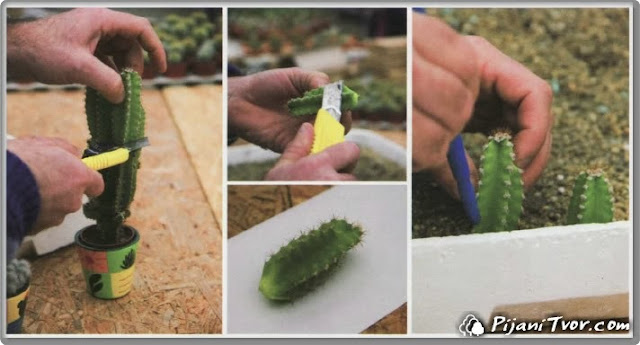Most cactus varieties require minimal care to thrive inside the home or out in the garden. Occasional trims can keep the plants looking their best and minimize disease, since you remove weak sections.
Cactus plants don't require frequent pruning and many can go five years or more without a trim. Trim the plants only if they start to become too large or if there are many weak or damaged leaf sections.
Trimming Tools
All cactus varieties have spines, although some are sharper and more likely to inflict injury than others. Wearing heavy leather gloves when trimming the cactus minimizes injury risk. Long sleeves can also prevent scratches, especially when trimming larger cactus varieties with many small spines, such as nopales.
A sharp, clean knife cuts easily through cactus leave and won't crush them like shears can. A handsaw is sometimes necessary for large cactus plants. Small handheld shears work best for trimming cactus roots when transplanting or repotting a plant.
Tropical Cactus
Tropical cactus plants, or the holiday cacti, grow primarily as indoor potted plants. This cactus variety requires infrequent pruning to maintain it size and to remove damaged foliage. Holiday cacti produce leaves in segments.
Flowering and dormancy times vary between the different types of tropical cactus, but generally you can prune them at any time except for during flowering and the four weeks after the blossoms drop. When trimming, cut off individual leaf segments at the joint.
Remove all damaged or dead segments first, then trim back the remaining segments one or two leaf joints to maintain the shape and size. Each healthy segment can grow into a new plant if it's rooted into a well-drained potting mix.
Desert Cactus
Desert cactus plants grow as outdoor ornamentals and in pots. Those grown in pots rarely require pruning, except to remove dead leaf segments. Outdoor plants primarily require pruning to control size and to remove damaged sections.
Barrel cactus types do not require any trimming, only those that produce leaf segments, paddles or jointed columns. When trimming the cactus, work around the outside of the plant first before trimming the interior. Make cuts at joints between segments or paddles, not through the center of a leaf.
Remove columns at the base, removing no more than a third of the columns on a single plant. Use the knife for small joints and the handsaw for large or tough joints.
Root Pruning
Container grown cactus plants may require root pruning if you want to keep them small. Outdoor plants also require a root trim if you dig them to plant them in a new area. Dead roots appear dry and brittle or soft and rotten.
These require removal back to the healthy root section. Healthy roots also require trimming. For outdoor transplants, roots should generally be no more than 5 to 10 inches long. Container plant roots need trimming so they can fit comfortably in the pot. After trimming, dusting the roots with sulfur and allowing them to dry for a week or two in a shady area minimizes the chances of disease after replanting.
source
,
Random Post
https://succulents-garden.blogspot.com/search/label/DIY
Recent-Post
10/recent/post-list
Popular Posts
Recent Posts
8/recent/post-list
Created By SoraTemplates | Distributed By Blogger Templates




